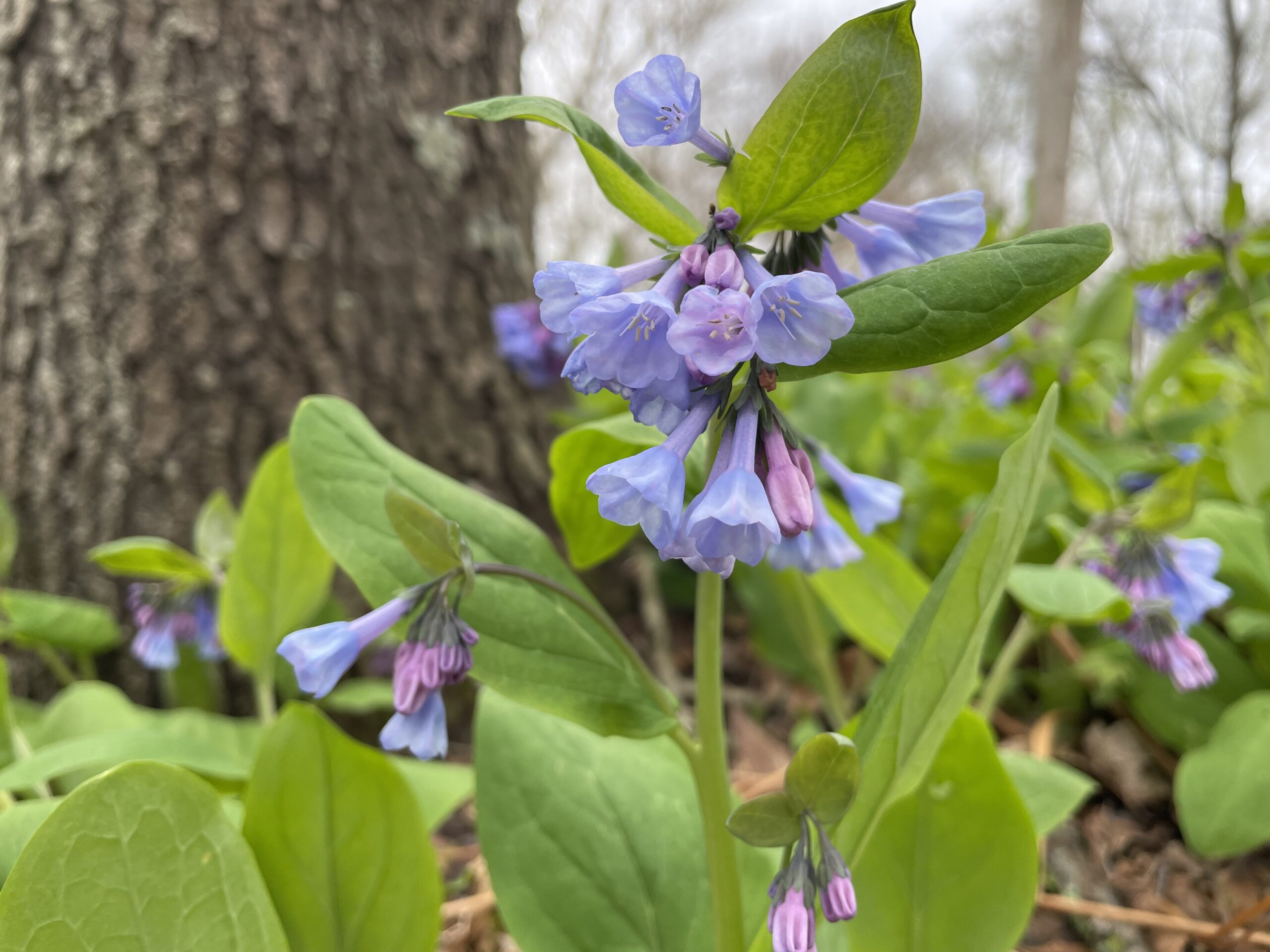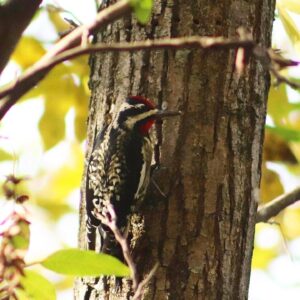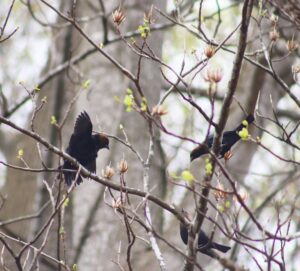All About Spring Ephemerals
By Christy Rybka
Many of the first wildflowers that bloom each spring are known as spring ephemerals. The word “ephemeral” means “to have a short lifespan.” These wildflowers, which only last for a few weeks at the beginning of spring, begin to flower as soon as the temperatures rise, but go dormant soon afterwards. Although spring ephemerals may be found in a variety of growing conditions, most prefer to grow in deep woodlands in damp soil near streams or creeks.
Some wildflowers that grow along the trails and in the Woodland Garden at Creasey Mahan Nature Preserve include the Bleeding Heart, Bloodroot, Cutleaf Toothwort, and many others!
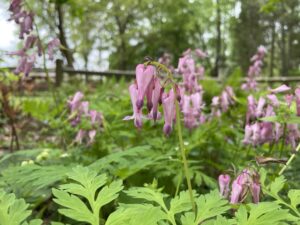
Fern-leaf Bleeding Heart (Dicentra eximia)
Fern-leaf Bleeding Heart is a perennial that grows in woodlands and on steep, rocky ledges. Named after its pink, heart-shaped flowers with tiny “droplets” at the bottom, these flowers bloom from late spring to the first frost (in November) and prefer moist, partly shady conditions. In addition to its unique heart-shaped flowers, this lovely plant may also be identified by its distinctive fern-like leaves.
Bloodroot (Sanguinaria canadensis)

The native Bloodroot is named after the bright red sap inside its rhizome (a fibrous root). When you see a Bloodroot, take a moment to enjoy it, because as a member of the Poppy Family, it will flower for only a day or two. Look for it in deep woodlands, on steep slopes, and near streams and ponds. Beware: although Bloodroot has historically been used for medicinal purposes, all parts of the plant are highly toxic.
 Cutleaf Toothwort (Cardamine concatenata)
Cutleaf Toothwort (Cardamine concatenata)
In early spring along Little Huckleberry Creek, you are likely to find groupings of the native Cutleaf Toothwort. Blooming between March and April, this wildflower prefers to grow in moist woodlands along streams and rivers where it naturalizes and forms colonies by spreading its rhizomes underground. It is in the Mustard Family and is sometimes called a bittercress.
Dutchman’s Breeches (Dicentra cucullaria)

This dainty, white wildflower, known as Dutchman’s Breeches, grows most bountifully in the early spring on forest floors, in deep woods, and along steep ravines. Named after its flowers which grow in the shape of upside-down pantaloons that appear hung on a clothesline, these native perennials can be seen in early March, but will go dormant before summer. Their finely divided leaves are fern-like and may have a blue-tint.

Rue Anemone (Thalictrum thalictroides)
Native Rue Anemone is a delight to behold in spring, as it grows on steep slopes or ridges in deep woodlands. You’ll spot these white or pink-petaled woodland wildflowers as early as March. They are also known as Windflowers due to their tendency to bend in the slightest breeze, which helps disperse pollen. This Rue Anemone was photographed next to the waterfall at Little Huckleberry Creek.
Trout Lily (Erythronium americanum)

Along Creasey’s trails in deep woods in early spring, and you may notice hillsides of spotted green leaves. These are colonies of Yellow Trout Lilies. A favorite spot to view them is on the slope leading to Little Huckleberry Creek. Named after its mottled leaves that resemble a trout swimming through water, Yellow Trout Lily is also called Fawn Lily due to the spots. Within a colony, only about 7% of the plants will flower.
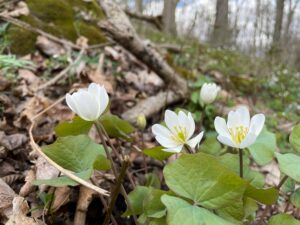
Twinleaf (Jeffersonia diphylla)
Also seen on the slopes of Little Huckleberry Creek are white wildflowers known as Twinleaf, found in early spring. Named after their mirrored leaves with identical lobes on each side, these native perennials bloom most frequently in deep, partly shaded forests and on rocky ledges. The plant was named after Thomas Jefferson.
Virginia Bluebells (Mertensia virginica)
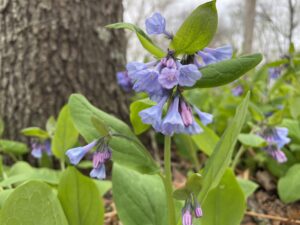
When you come across a colony of native Virginia Bluebells, you must stop and enjoy their beauty! The common name comes from the periwinkle bell-shaped flowers; they bloom in early spring and go dormant in summer. Many of the buds will be pink before changing color. These beauties grow most abundantly in floodplains or deep woodlands along streams and rivers.
Between March and April, many of these spring ephemerals may be found along the trails, near Little Huckleberry Creek and in the Woodland Garden at Creasey Mahan Nature Preserve. If you see any spring ephemerals at Creasey Mahan this year, take a photo and tag us on social media! For help identifying the flowers you see on your hikes, be sure to visit the online Plant Directory where we share information about all of the flowers you find at Creasey Mahan. Also, our Executive Director, Tavia Cathcart Brown, has co-authored a field guide to wildflowers across 16-states titled, Wildflowers of Tennesee, The Ohio Valley, and Southern Appalachians.

